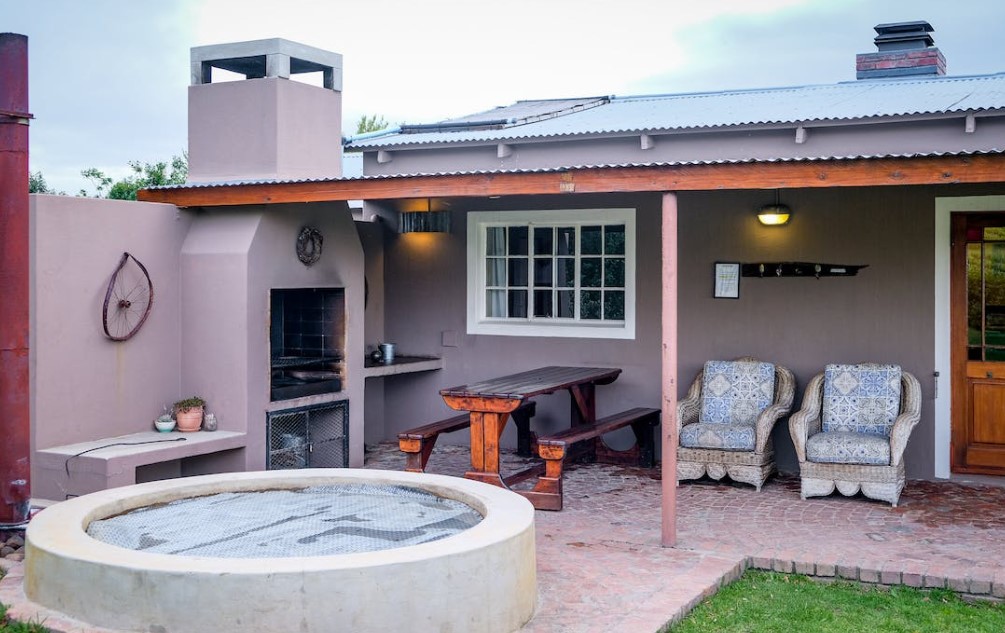Is Crawl Space Encapsulation Worth The Cost?
Enclosing a crawl space is a common practice nowadays since it prevents water damage and other issues from entering a house through the area. Crawl space encapsulation is a sound investment in the long-term health of your home’s structure and the comfort of its inhabitants. Also encapsulating your crawl space is one of the most cost-effective and efficient options to enhance your home’s interior air quality and save utility bills.

Why Crawl Space Encapsulation?
If you reside in an area that has chilly winters, encapsulating your crawl space can help you maintain a warmer house throughout the season. If you have a basement, doing this will assist keep the warmth down there where it belongs by preventing heat from escaping. In addition, crawl space insulation helps minimize the buildup of moisture, which can be a contributing factor in the development of mold.
Pros and Cons of Crawl Space Encapsulation
Crawl space encapsulation offers a number of benefits, including a reduction in monthly energy expenses and an improvement in the quality of the air within the home. On the other hand, there are a few negatives associated with this option, such as greater installation costs and the possibility of foundation damage. Below are some of the notable benefits of having your crawl space encapsulated.
Improves Air Quality
Enclosing your crawl area will improve the quality of air throughout your house, making it safer to breathe for you and your loved ones.
Pest and Insect Control
Dampness is essential for the survival of insects like termites. Enclosing a crawl space makes it impossible to foster an environment favorable to insects like termites. If you have a crawl space and are worried about insects, rodents, or other pests, hiring a professional to encapsulate it is the wiser solution.
Keeps Mold and Mildew at Bay
When moisture is removed from under your property, you prevent unwanted moisture concerns. Also, your HVAC system will not bring any unpleasant scents into your house, like musty or damp ones.
Makes Your Foundation Last
Preventing moisture buildup in your crawl space is crucial for the long-term health of your home’s foundation. It’s important to keep the crawl space dry so that moisture doesn’t seep into the soil around the house’s foundation. While gutters direct water away from the base of your house, a damp crawl space can still lead to structural issues. Enclosing your crawl area will keep moisture out and make your foundation stronger for the long haul.
Helps with Energy Efficiency
Utility costs can be reduced by having your crawl area dried up so your HVAC system doesn’t have to work as hard to dry out the air. Crawl space encapsulation may help your home save money on energy bills and is, thus, a worthwhile investment.
Makes Floor Comfortable
If your crawl space is encapsulated, even in the dead of winter your home’s hardwood and tile flooring will be at the right temperature for bare feet. A further benefit of encapsulation is that it prevents the damp and muggy sensations of summertime humidity from seeping into your house.
Keeps Your Wiring Safe
In addition to being dry, an encased crawl space may safely hold a number of different types of utility equipment. You may rest easy knowing that your systems are safe from the dangers of moisture and humidity when they are in an encased environment as opposed to an open crawl space.
Just like any other if there are benefits there are also some drawbacks that come along with crawl space encapsulation. And here are some of them.
Expensive
This is the most glaring problem in encapsulating off the crawl space. Costs for this project typically range from $1,500 to $15,000. The cost will be determined by factors such as the floor area of your crawl space, the difficulty of access, the condition of the crawlspace, and the amount of work required.
Cannot be used as storage space
Your home’s crawlspace could be used as extra storage if you could only get to it, but that’s not going to be possible if there’s no door to it. Any items you plan to remain in your crawl space after encapsulation will need to be moved somewhere, as you will need to break the seal to get to them.
Might require HVAC system upgrade
When you enclose your crawl area, you reduce the amount of air that can freely circulate around your house. Because of this, the effectiveness of your HVAC system, which was likely built considering the previous airflow pattern, may have decreased. If your home’s heating system relies on combustion, this might happen more often.
After having your crawl space encapsulated, you may notice that your home is not as warm or cold as it used to be. If this is the case, you may want to consider upgrading your HVAC system.
Regular maintenance
A monthly inspection and maintenance schedule is required once a crawl space encapsulation system has been installed. Your recurring expenditures may be the same or even greater than they would be if you just let the crawl space exist without the upgrade, depending on the number of features you selected for this update. The product’s sealing benefits may not provide the necessary return on investment if you reside in an area that doesn’t get a lot of rain or moisture.
Crawl Space Encapsulation vs Vapor Barrier
Encapsulation is the process of covering the whole area of your crawlspace using white plastic sheets. This includes the floor and the walls of the crawl space. For optimal results, it is essential to seal all of the seams and corners. A dehumidifier and sump pump are necessary for the extremely efficient running of your encased environment. A regular dehumidifier wouldn’t be able to handle the conditions in a crawl area, so you couldn’t use one there.
Since encapsulation uses a dehumidifier in addition to a sump pump, it is highly effective in removing water, particularly in more severe situations like a burst pipe.
The vapor barrier on the other hand requires only the floor of your crawlspace to be sealed. Black plastic sheeting of 6mm thickness is used. It’s possible to use thinner materials, but 6 mm will hold up the best over time. Because there are no airtight crawl space vents, neither dehumidifiers nor sump pumps are required.
Vapor barriers, in contrast to encapsulation, have uses outside of crawl spaces. When necessary in wetter climates, they are also utilized for insulation. They go inside the insulation in places with low temperatures. They go on the exterior of the insulation in warmer areas.
Crawl Space Encapsulation Alternatives
Interior Drainage system
Moisture that seeps in via the foundation or the crawl space is drained away by an internal drainage system. An internal drainage system is designed with perforations in the drain pipe to collect water from both the drain and the room inside.
Crawl Space Dehumidifiers
Crawl space dehumidifiers are powerful enough to handle the high humidity found in crawl areas and are designed to run continuously. If the room becomes flooded, however, or if a lot of water pools on the ground, it will be useless.
Vapor Barrier
Crawl space floors and walls are lined with thick plastic to act as a vapor barrier, also known as a moisture barrier. One of its primary functions is to keep water out of your crawl area. It also prevents any moisture from the air outside the wall from entering the crawl area. Crawl spaces can be protected against the accumulation of moisture by the use of a vapor barrier and enough cross ventilation.
Tips for choosing a crawl space encapsulation contractor
Proof of Work
If you are unable to get down into the crawl space yourself, you should insist that the crawl space encapsulation specialist show you proof of the work that they have done.
Service Agreement
It is strongly suggested that before you choose a business to encapsulate your crawl space, you investigate whether or not the provider provides any kind of service agreement. This in no way implies that you are required to purchase the service agreement. Take into account however, that many of the things that are done to remedy crawl spaces include the use of mechanical components, such as fans, dehumidifiers, and sump pumps. In addition, similar to a vehicle, they need regular maintenance. Check to see if this provision is included in their service agreement.
Reviews
Checking someone’s background is something that may be done before hiring them. Check out what people are saying about them on Google and Facebook. There are some regions of the country that are very active on Yelp and Angie’s List. Examine the website for the BBB. When you do this, you should also make sure that you give an objective evaluation of these reviews. There are who are just providing negative remarks even though they have not used or tried that contractor.
Compare
There are homeowners when someone recommends a contractor to them, they blindly start working with that said contractor. Before hiring one, at least compare 2-3 crawl space encapsulation contractors. This is to ensure that you have chosen the one that suits your needs and wants.
Crawl space encapsulation installation tips
In the event that encapsulating your crawl space is something you’re thinking about doing, the following advice should help you make an informed choice.
First things first: determine how much insulation you actually require. To calculate the total square footage of insulation that will be required, first measure the area that will be encapsulated, and then multiply that measurement by 0.6.
The next step is to select either fiberglass or cellulose. Although it is more costly than cellulose, fiberglass has a longer lifespan than the latter material. Cellulose is less costly than other materials, yet it has a greater propensity to degrade over time.
Last but not least, give some thought to the kind of insulation you require. You have the option of buying blown-in or batts for your insulation needs. During the installation of blown-in insulation, a blower is used, and batts are rolled into position at the same time. Both choices provide comparable degrees of protection against the loss of heat and the intrusion of cold breezes.
Crawl Space Encapsulation FAQs
If your home has a crawl area, you should get rid of all the moisture in there as soon as possible. Moisture in your crawl space can lead to damage to your home’s foundation. With these, the answer to the question at hand should be a big YES.
Some may say No but, with rising electricity prices, it’s great news that crawl space encapsulation may increase your home’s energy efficiency by as much as 20 percent. The carbon footprint of a house may be decreased by cutting back on electricity consumption. Yes, it does work.
Standard guarantees for crawl space encapsulation projects typically range from 15 to 20 years. A properly sealed crawlspace can persist for over 20 years if humidity levels are maintained and natural disasters like flooding are avoided
As mentioned above this project ranges from $1500 – $15000 depending on the factors such as size of the area, accessibility, and the amount of work needed.
Some municipal and state governments match federal tax credits for energy-efficient home upgrades like crawl space encapsulation.
Final words
at first glance, crawl space encapsulation seems like an expensive project. But looking at the long-term benefits that it will provide, every homeowner should consider encapsulating their crawl space. If you are not sure where to start, always consult a professional and avoid doing it yourself.







